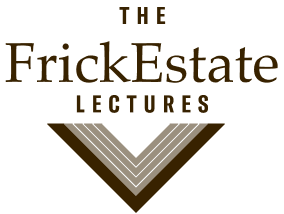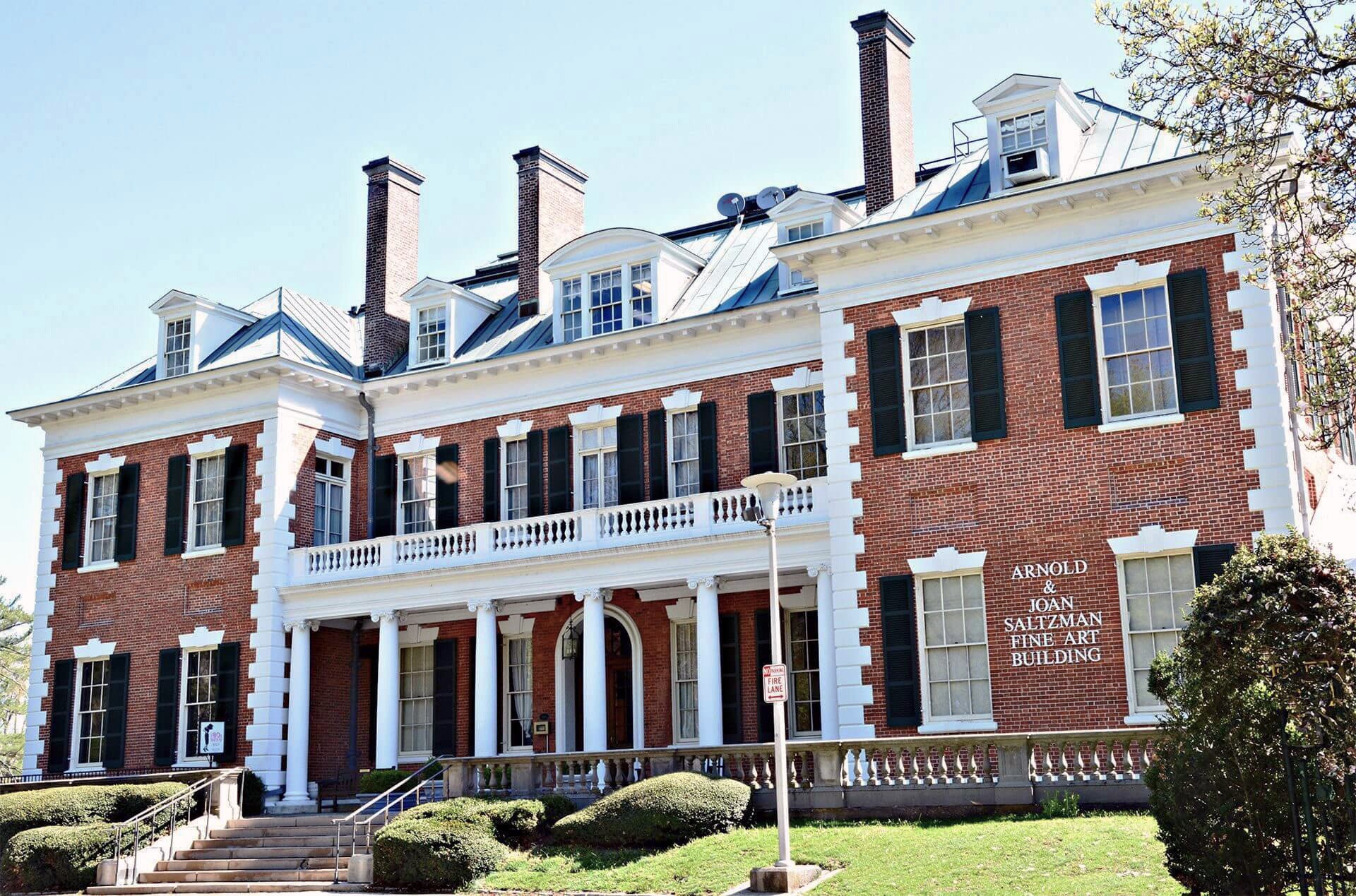About Us
Our Mission
The Frick Estate Lectures was established in 2019 to provide mature adults with outstanding enrichment in the liberal arts and sciences. These lectures are intended to appeal to those who appreciate carefully curated and thoughtfully presented courses delivered by experts in the various fields of literature, history, music, art, philosophy, economics, psychology, and political science. The Frick Estate Lectures is incorporated under its own name and was designed to cooperate with and support its venue at the Nassau County Museum of Art.
What We Do
The Frick Estate Lectures provides personal enrichment for mature adults who appreciate literature, art, music, history, philosophy, economics, psychology, and politics science. Our liberal arts disciplines deliberately exclude vocational or “how-to” subjects. These courses cater to all who are interested in non-credit enrichment taught year-round by outstanding experts in their fields. Students who attend the lectures enjoy an aesthetic experience at our elegant venue and a diverse learning opportunity that invigorates and inspires them.
Press
"Frick Estate Lectures return to Nassau County Museum of Art for 6th year"
By Larissa Fuentes for Long Island Press
August 22, 2025
The Frick Estate Lectures, a nonprofit program dedicated to lifelong learning in the liberal arts, is returning this fall to the Nassau County Museum of Art with more than 30 courses in literature, history, philosophy, art and film.
Now entering its sixth year, the lecture series was founded by longtime educator and Frick Estate Lectures Executive Director Kay Sato, who previously directed the Hutton House Lectures at LIU Post for 25 years. When that program ended, members of her advisory board rallied to keep the spirit of adult enrichment alive, helping establish the Frick Estate Lectures in 2019.
“The people who were on my board at the time said, ‘We’re not going to let you go. You’re going to do another program, and we’ll help organize everything,’” Sato said. “Sure enough, we did. We were able to set up this program at the museum, and it’s been our home ever since.”
The lecture series draws its name from the historic Frick family estate, which now houses the Nassau County Museum of Art. The grounds, once owned by industrialist Henry Clay Frick’s son and daughter-in-law Childs and Frances Frick, provide what Sato calls “an isolated paradise” for learning, complete with art exhibits, sculpture gardens and walking trails.
While rooted in history and culture, the program’s mission is forward-looking: keeping minds active and engaged at any age. Most participants are between 50 and 80 years old, but Sato said there is no age limit, one board member and student is 92.
“People come here because they feel like they have a place where they can be vibrant and alert, where they can learn new things and strengthen their abilities,” she said. “If we don’t use it, we lose it.”
This fall’s lineup reflects that mission with an ambitious slate of offerings:
September 3: English professor John Lutz begins a five-week course on William Faulkner’s “Light in August,” widely considered one of the author’s masterpieces. The class will explore the novel’s themes of identity, race and belonging in the American South.
September 16: Historian Molly Tambor, an associate professor and former Rome Prize winner, presents “Fascism vs. fascism: Mussolini’s Regime and Its Legacies.” The lecture examines Benito Mussolini’s rise to power in 1922 and the enduring influence of fascist ideology in modern politics.
September 25: Actor, painter, and filmmaker Peter Josyph screens David Lynch’s “The Straight Story” as part of his film series “Outsiders on Film.” The discussion will focus on the film’s quiet portrayal of resilience and family.
Later in the semester, literature lovers will take a deep dive into Herman Melville’s “Moby Dick,” while art historians will guide students through key movements in European painting. Music and philosophy lectures round out the catalogue, offering what Sato calls “a boutique program of liberal arts.”
“We only bring in the best professors and the best classes we can find,” she said. “It’s not a low-level program. People tell me it feels like going back to college — except this time, you get to enjoy it without worrying about grades.”
The program has grown steadily since its launch, evolving from a modest schedule of 20 courses to a year-round slate that resembles a small liberal arts college. Classes are often taught in multi-week sessions, allowing for in-depth exploration.
The pandemic forced the lectures online, but even then, loyal participants stuck with it, sometimes learning Zoom with Sato’s personal guidance. One board member in his 90s called her regularly for help navigating the software.
“He would say, ‘What do I do now?’ and I would walk him through step by step,” Sato said. “For people who were alone at home, it meant so much to stay connected.”
Today, the program is almost fully back in person, with a few online courses still available for those who prefer them. Attendees travel from across Long Island and even beyond, with some driving from Maryland or New York City to take part.
Professors, too, value the experience. Many, Sato said, find the mature audiences more engaged than undergraduates.
“One professor told me, ‘I love teaching here because the students are so responsive. It makes me feel like it’s all worthwhile,’” she said.
Sato, who holds a doctorate in English and taught at the University of Georgia before moving to New York, said her personal favorites are the literature courses, which often spark lively debates.
“We do history, music, art, philosophy — the whole spectrum,” she said. “What excites me most is seeing people energized, excited about the material, and enjoying the camaraderie. They leave feeling like they’re not over the hill, that they still have so much to give.”
As a nonprofit, the Frick Estate Lectures relies on tuition, sponsorships and year-end appeals to support its faculty and keep courses affordable. Sato said the priority is always paying professors fairly while ensuring students can access the program.
Looking ahead, she said she hopes to expand online registration options and perhaps introduce membership packages. A new staff member with expertise in digital platforms may help make that possible.
For now, though, Sato is focused on welcoming students back to the museum this fall.
“I still love teaching, but this is also a service to the community,” she said. “It’s about preserving the liberal arts at a time when universities are cutting back. Here, people can come together, keep learning, and stay alive intellectually.”
-
The Frick Estate Lectures are held on the grounds of the Nassau County Museum of Art
All lectures are held in the Mansion unless otherwise indicated
-
The Museum
The Nassau County Museum of Art is situated on 145 acres and occupies an elegant Georgian mansion. The venue abounds with unique experiences that only a museum of true grandeur could offer, including formal gardens, outdoor sculpture park, arboretum, rolling lawns, meadows, and ponds. Every change of season.

By Car
Nassau/Suffolk Counties: Take Wantagh or Meadowbrook Parkway north to the Northern State Parkway west.
Brooklyn/Queens:
Cross Island Parkway to Northern State Parkway east Via Long Island Expressway or Northern State Parkway exit at Glen Cove Road (#39 on LIE, #31 on Northern). Drive north to the intersection with Route 25A/Northern Boulevard. Turn left (westbound). Continue to the second traffic light where the Museum entrance is on the right.

By Train
Take the Long Island Railroad Oyster Bay line to the Roslyn station or the Port Washington line to the Manhasset station. The museum is a short taxi or Uber/Lyft ride from either station.

By Bus
Nassau County’s N20H bus stops on Northern Boulevard at the entrance to the Museum.

